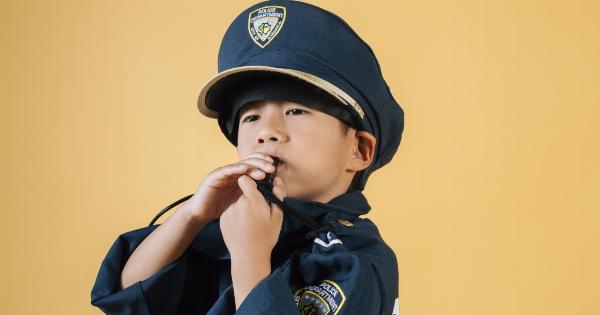For most of us, Santa Claus is an ever-present character in our lives. From movies to decorations, the jolly old man in the red suit with his sack of presents is an iconic symbol of Christmas.
Every year without fail, children write to him, leave out milk and cookies for him, and wait eagerly for him to deliver their gifts on Christmas day. However, as the world evolves, and myths surrounding individuals and events are debunked, we must pause and question why we continue to perpetuate the Santa Claus myth.
The history of Santa Claus
The origins of the Santa Claus myth can be traced back to the 4th century. The historical figure St. Nicholas of Myra was known for his generosity and kindness to children.
Over the centuries, his reputation evolved, and he became the patron saint of children, sailors, and merchants. In the 1800s, the image of Santa Claus was modernized by the American caricaturist Thomas Nast and the writer Clement Clarke Moore.
With the help of commercial advertisements, Santa Claus became the figure we know today: a jolly old man with a white beard, dressed in a red suit, and with his sleigh of reindeer.
Santa Claus and the commercial aspect of Christmas
It cannot be denied that Santa Claus plays a significant role in the commercial aspect of Christmas.
Advertisements, promotions, and sales revolve around the image of Santa Claus, and people spend considerable amounts of money on gifts for their loved ones, mainly children. The rise of ecommerce has only strengthened the commercial grip of this festive season. Retailers have capitalized on the myth of Santa Claus by using it for promotional activities to attract more customers and boost sales.
Does Santa Claus promote greed and materialism among children?
One of the most significant criticisms of perpetuating the Santa Claus myth is that it promotes a culture of greed and materialism among children. Children are taught that they must “be good” to receive presents from Santa Claus.
This concept compels children to place materialism and gifts at the center of their lives. Children who don’t receive as many gifts as their peers may feel left out or disappointed.
Moreover, the stress that parents face to keep up with the present-giving culture to keep their children happy and prevent them from being the odd one out can put an immense burden on them. While everyone loves receiving gifts, the Santa Claus myth puts an extraordinary and unnecessary focus on the material aspect of Christmas.
The emotional impact of finding out that Santa Claus isn’t real
Children eventually find out that Santa Claus isn’t real. For some, it is a fun and humorous discovery; for others, it can be confusing and emotional.
For children who believe that Santa Claus is a real person and that he’s the one who delivers their gifts, the realization that it is their parents, guardians, or relatives can be a massive letdown. Some children might feel embarrassed or foolish, which can affect their trust in their parents. While most parents try to break the news to their children gently, many find it a challenging conversation to have with them.
Children who are emotionally fragile can find this news very upsetting and can take a long time to come to terms with it.
Does Santa Claus perpetuate falsehood?
Many argue that perpetuating the Santa Claus myth perpetuates falsehood. In a world where facts and science are held in high regard, promoting a myth that isn’t true can be problematic.
It teaches children that it’s okay to believe in things that aren’t true, and that lying or making up stories is okay. Some people view this as an ethical problem, perpetuating a culture of deceit, and teaching children that the world is a much more magical place than it actually is.
Does the Santa Claus myth have any positive impacts?
Despite all of the criticisms leveled above, the Santa Claus myth has its share of supporters who argue that it has positive impacts. One argument is that the spirit of Santa Claus fosters generosity and kindness towards others.
When people engage in charitable activities and giving to those less fortunate than them, they often use the legend of Santa Claus to encourage their children to participate. Santa Claus is also used to promote positive values, such as selfless giving, kindness, and generosity. Many charity events revolve around dressing up as Santa Claus to spread cheer and goodwill.
The magic and fun of Christmas
The Santa Claus myth is often touted as the essence of the magic and fun of Christmas.
Children are given the chance to imagine impossible things – a sled pulled by flying reindeer, a rotund man fitting down chimneys, and the limitless number of presents that could be found in Santa’s sack. Furthermore, the Santa Claus myth also provides a common thread of excitement that most children share in the formative years of their childhood. It helps build lasting memories that children can take with them well into adulthood.
With that in mind, there is a compelling case for keeping the magical stories of Christmas alive.
Conclusion
In conclusion, the Santa Claus myth is a complex issue that must be evaluated from different angles. While it promotes and fuels the commercial aspect of Christmas, it can also foster positive values such as kindness, charity, and generosity.
On the other hand, it can also promote greed and materialism, and perpetuate falsehood.
The Santa Claus myth is often lauded as the quintessence of the magic and fun of Christmas, but could it be that we’re discounting those things that are genuinely great about the holiday season? As we celebrate the festive joy and warmth of the Christmases to come, perhaps we should take a step back to evaluate whether perpetuating the Santa Claus myth is still necessary or whether it’s time for a change.




























